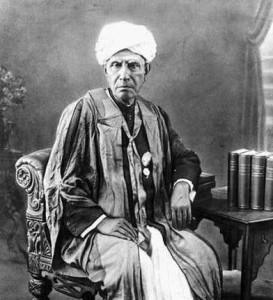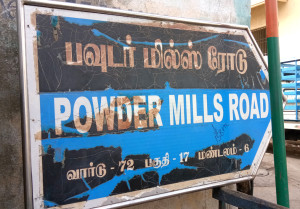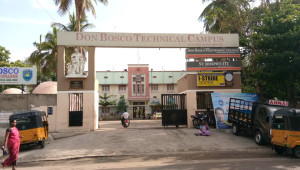Registered with the Registrar of Newspapers for India under R.N.I 53640/91
Vol. XXIX No. 6, July 1-16, 2019
Archives: Vol. XXIX No. 6, July 1-16, 2019
Back to harvesting, but no rain
by The Editor
And so in a case of going back to basics, our city’s Corporation has instructed its officers to go on an inspection drive – each ward has been asked to inspect at least 1,000 buildings, thereby bringing the total to 200,000. The idea behind this is that the city will have a clear picture of how many such structures have rainwater-harvesting (RWH) systems in working condition, how many need to be rectified and finally, how many have no such arrangements in place. All this so that as and when (we sincerely hope it is not a case of if and when) it does rain, we will have begun storing what is now merely surface runoff. The question is, what was the Corporation doing for so many years?
Chennai was the first city in India in modern times to take up RWH schemes. That was in 2003, when the Chief Minister passed an ordinance to this effect and went on media to appeal to the people. The implementation of RWH facilities was made mandatory in all new buildings and it had to be taken up by existing structures as well. The matter was followed through in right earnest (what else do you expect when the CM has said so) and sure enough, when it rained in 1996, the groundwater was recharged and everyone congratulated everyone else on having achieved a great success.
Unfortunately people took the rain for granted. The Government changed and the new dispensation clearly did not consider something so clearly associated with the previous one to be worthy of follow up. Or at least that is what officialdom appears to have thought anyway. And so, RWH was given the go by. Studies have gone on to reveal that most of Chennai’s buildings have installed RWH structures more as a matter of compliance with no proper planning or maintenance. As a consequence, the rainwater is not harvested at all and is allowed to go waste. The worst offender it transpires is the Government itself. The Times of India has reported that the SAF Games Village, now an upmarket housing colony for Government officials has no RWH for instance. What was officialdom doing when the Government was building this complex? It is quite clear that RWH, like much else for which we pass ordinances and rejoice as landmarks in our evolution, has been reduced to a mere piece of paper.
To what purpose is this To what purpose is this post-mortem? And before you run away with the idea that this survey will yield results, let us present you with the next statistic – the study will cover just 200,000 buildings while Chennai has 12.5 lakh constructions. When will we know the status of the rest? Metrowater claims that around 8.9 lakh RWH systems are in place in the city. What is the status of each of these? Nobody really knows. The task of monitoring RWH structures and ensuring that they are effective should have been a routine process with a system of warnings and fines in case of non-compliance.
Implications of language formula on Tamil Nadu’s progress
by A Special Correspondent
The draft National Education Policy 2019 has brought the vexed question of language in education once again to the fore. The initial draft recommended the three-language formula that was rejected fifty years ago. The resistance has prevailed over the years – on seeing the outcry to the initial draft, the Central Government rephrased the report text to the effect that students could change their language preference in Grades 6 or 7, “so long as they are able to still demonstrate proficiency in three languages (one at the literature level) in their modular Board examination sometime during secondary school”.
When ‘Tamizh Thatha’ turned 80
by Karthik Bhatt

Dr. U. Ve. Swaminatha Iyer
Dr. U. Ve. Swaminatha Iyer was one the foremost scholars of the Tamil language. Born in Uthamadhanapuram in Tanjavur district on 19 February 1855, Swaminatha Iyer dedicated his life to the study and research of Tamil. One of his biggest contributions was bringing to light several literary classics such as the Jeevakachintamani, Pathuppatu, Silappadhikaram, Manimekalai etc., works that had hitherto been known only through passing references in other pieces of Tamil literature. His painstaking efforts, which involved going in search of and collecting palm leaf manuscripts from various sources, resulted in a huge body of work and earned him several admirers and dedicated followers, besides the moniker Tamizh Thatha. In 1935, when he turned 80, a group of prominent well-wishers from Madras took it upon themselves to celebrate the occasion in a grand manner.
When Perambur made Gunpowder
- Sriram V

OLD |

NEW |
|
Our Old is the signboard that records the fact that a gunpowder mill once functioned in Perambur. The New is the Don Bosco Technical campus that came up on the same site in 1951. More in Lost Landmarks. Photo credits: S. Joseph. |
|
Powder Mill Road, Perambur, is a thoroughfare that connects Pulianthope and the Don Bosco campus. In terms of distance it is not much but the name is indicative of a history long forgotten, for this was where the East India Company made gunpowder for quite some time.
Memories of a cherished grandfather
by Balakesari Komattil
Reminiscing on Dr. Kesari
On 23rd April 2019, a function was held in the premises of Kesari High School, T. Nagar to mark the Platinum Jubilee of Kesari Schools and laying of the foundation stone for a new building in T. Nagar School in which Vice-President, Mr. Venkaiah Naidu was the Chief Guest. The original programme was to have included a short talk by one of Dr. Kesari’s family members reminiscing about him and I, as a grandson of Dr. Kesari was asked to do the job. But with the function having two more VVIP guests who also desired to speak and consequent time constraints, my talk had to be axed.

